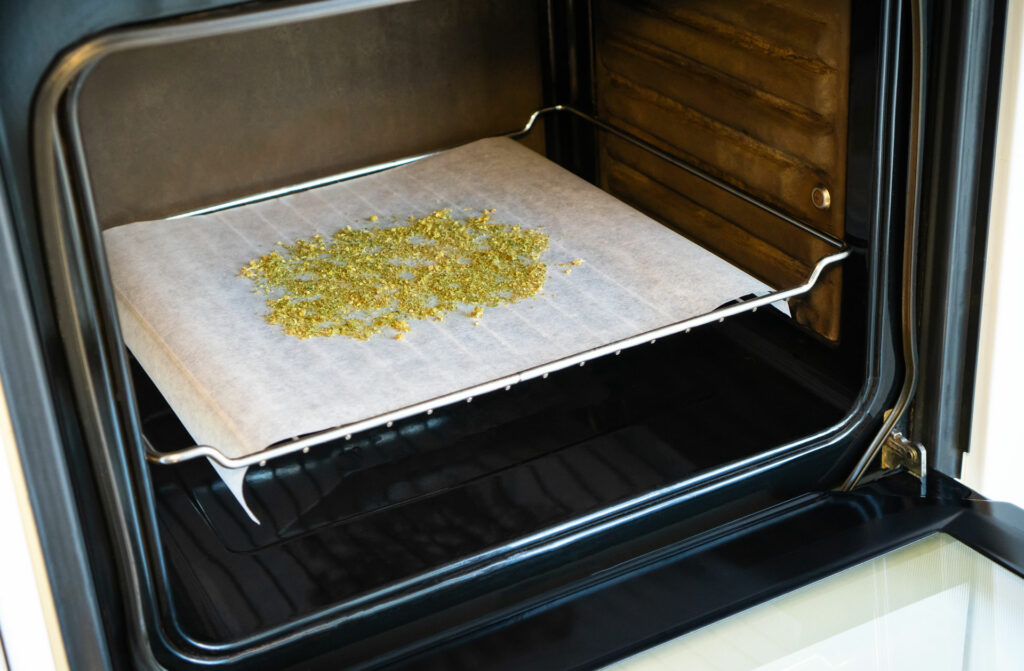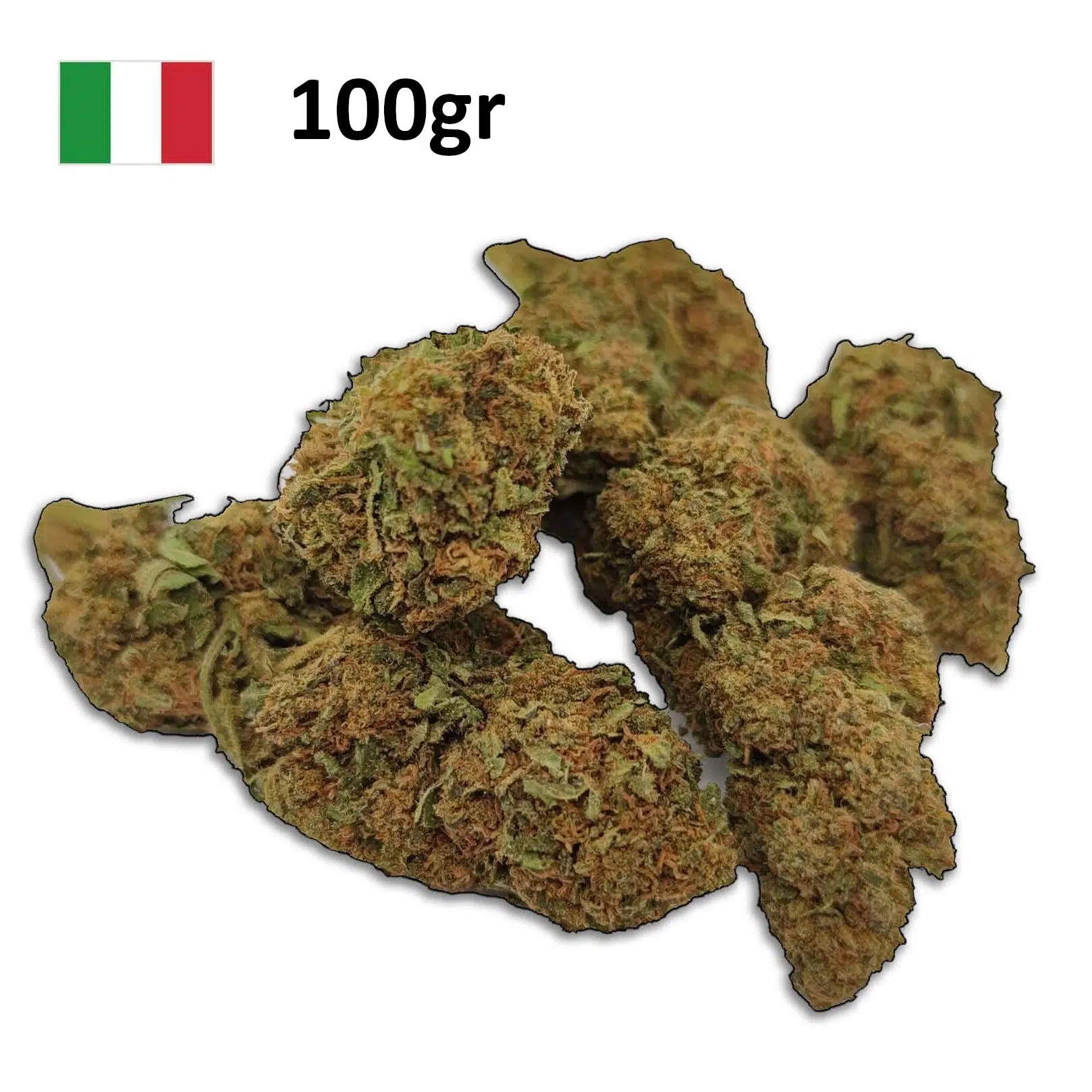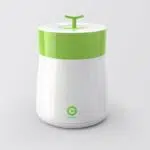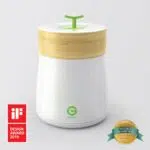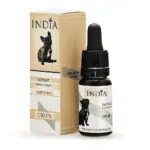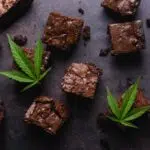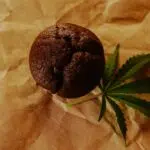By heating, the CBD activates the terpenes contained in the flower. These terpenes are carriers of odors and flavors. Depending on the mode of decarboxylation, the contribution of CBD will not be quite the same.
In the oven, with a high heating temperature (120°C), the active ingredients are more developed, while the flavors are attenuated. This process is very suitable for pastry which very often requires baking in the oven.
We will now see what are the different decarboxylation methods for cooking:
Oven decarboxylation
By heating the flower, this process transforms the CBDA into CBD. However, it tends to reduce the potency of the terpenes (i.e. the taste and smell of the flower) in favor of the active ingredients of cannabis. In other words, decarboxylation in the oven is less tasty and more active.
5 min of preparation – 30 min of cooking
Ingredients
Preparation steps
- Preheat the oven to 100°C. Crumble the flowers in a baking dish, then cover with aluminum foil.
- Bake for 30 minutes in the oven.
- Remove from oven, allow to cool before storing.
CBD flowers: Our selection of the moment
Décarboxylation au bain-marie
A la différence de la décarboxylation au four (voir ci-dessus), celle au bain-marie préserve les terpènes, c’est à dire le goût. Des derniers étant volatiles, il n’est pas utile de préparer de grandes quantités. Pour des saveurs et parfums optimaux, mieux vaut en confectionner un petit bocal avant chaque recette.
2 min de préparation – 1h de cuisson
Ingrédients
- 2g de fleurs de CBD
Etapes de préparation
- Mixer les fleurs puis les placer dans un bocal muni d’un couvercle. Le refermer hermétiquement.
- Déposer le bocal dans une casserole en l’entourant d’un torchon pour le caler lors de l’ébullition.
- Remplir la casserole d’eau et porter à ébullition pendant 5min.
- Puis baisser le feu pour que l’eau frémisse et laisser cuire 30minutes.
- Eteindre et laisser l’eau refroidir le bocal dans le bain-marie.
- Recommencer le procédé une fois.
Culture du Chanvre en intérieur, en extérieur et sous serre : quelle est la différence ?
